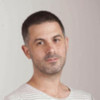The Altar of Pergamon: Hearing the public space
The history of the Altar of Pergamon, which has long served as a symbol to Turkey's efforts to retrieve cultural artifacts from abroad, provides the inspiration for Turkish artist Cevdet Erek's sound installation on view at Arter until Aug. 9, 2020.
If you look up the words ‘Bergama Sunağı’ (Turkish for the Altar of Pergamon) in any online archival database in Turkey, it is highly likely that you will find loads of pages or news clippings in relation to a ‘cultural war’, assumed to take place between Turkey and Western cultural institutions and museums. Presumably built around the second century BCE in the present day Bergama province of İzmir, and transported to Berlin after its excavation at the end of the 19th century under the auspices of German institutions, the altar has long been a symbol of Turkey’s self-professed efforts to retrieve its cultural artifacts from abroad.
At present, this historical site provides the inspiration for Cevdet Erek’s new sound installation Bergama Stereotip, on view at Arter until August 9th, 2020 with the curation of Selen Ansen. The work is a site-specific reinterpretation of the artist’s previous sound installation Bergama Stereo, which was exhibited at two different locations in Germany. Using rhythmic sounds to dissect the spatial experience, Erek subverts the monumental structures’ function of creating and sustaining myths. The altar’s symbolic value and journey throughout history allows the artist to delve into the monumental structures’ construction of an ideal past as well as their inaccessible nature that makes such an endeavor possible.
Bergama Stereotip consists of a solid red wooden structure devoid of any reference to the architectural style of the Hellenistic period where the altar was supposedly built. Speakers placed at various spots within the structure emanate a set of indiscernible sounds. Yet once one comes nearer or enters the installation through the stairs in the middle, the overall noise starts to come apart and certain aural patterns emerge. A rhythm reminiscent of Morse Code comes out from one of the speakers, while war chant-like rhythmic roars arise from the other parts of the installation. Elsewhere, husky voices can be heard.
All in all, these voices are Erek’s interpretation of the images of the Altar of Pergamon’s frieze depicting the battle of gods and giants. As the aural counterpart of friezes, the sounds are projected towards the sides of the space that the installation is built in. And just like a frieze strikes a viewer upfront at first glance, the visitors at Arter initially encounter these sounds as they enter the exhibition space.
However, unlike its visual match, this aural frieze allows the artist to play with the concept of proximity due to the sound’s volatile nature. Though one can go further inside the installation and closer to the sources of sound, one remains subjected to remaining voices around.
As opposed to the imposing character of the monumental structures, Bergama Stereotip presents a platform that is responsive to the viewers’ position, in that the experience it presents changes as the viewer moves. Considering the contentious account of the Pergamon Altar’s excavation and exhibition, this work's versatility operates as a way to confront the history that lies beneath the presentation and perception of such monumental structures.
In addition to its pivotal role in Turkey’s efforts to bring back its cultural artefacts, the altar also holds a symbolic position in the history of its current location, Germany. The reliefs of the Great Altar of Pergamon were discovered by Karl Humann (1839-1896), a German engineer in charge of the construction of railway lines for the Ottoman government. Under the auspices of the Berlin Museum, Humann directed the excavation of the ancient city of Pergamon during the 1880s and the findings of this excavation were transported to Berlin to be later reconstructed in a museum.
As Max Kunze points out in his The Altar of Pergamum: its rediscovery, history, and reconstruction, neither Humann’s motivation to resurface the Hellenistic city of Pergamon nor the authorities’ and the public's enthusiasm regarding his work were detached from the climate of the Wilhelmine period where small, German-speaking states were unified to form the German Empire. Within the Empire, the public found parallels with the contemporary political situation in the altar’s splendor, while Humann omitted the traces of the centuries in between (of Byzantine and Ottoman periods) due to the zeitgeist that only considered Imperial and Roman architectural elements as important. First presented in Altes Museum, the altar then moved to Pergamonmuseum built to the purpose, which remains one of the most frequently visited museums in Berlin.
In light of Erek’s tendency to turn inside out the temporal and spatial aspects of public life as in Courtyard Ornamentation with 4 Sounding Dots and a Shade or questioning the participatory nature of spaces as in ÇIN, the Great Altar of Pergamon seems to be the ideal choice of subject for the artist. Regardless of its preserved state in a museum, or in other words its presumed position as frozen in time, the altar’s journey and perception proves to be the contrary. The issue of accessibility is essential to Pergamon Altar’s journey in modern ages, rendering this ancient structure—where supposedly sacrificial ceremonies took place—a relevance in contemporary discussions concerning borders and how they have functioned in creating myths.
As for Erek’s previous sound installations, architectural and auditory elements undermine the sources they refer to and the altar gets its share of the artist’s subversive exploration. Thus, the structure's inaccessibility, which heightens its status as an idea rather than as physical space, is turned inside out.
To complicate things further, Erek realized both the Bergama Stereotip and its precursor Bergama Stereo without having seen the altar itself, as the Pergamonmuseum, its current location is closed to the public until 2023 for renovation purposes. Using only the sources at hand for creating his work, the artist positions himself akin to the viewer and once again renders the complexities of public life audible.

